Today we review two digital to analogue converters from US manufacturer Schiit Audio: the $699 USD Bifrost 2, and the new $199 USD Modius. You can check out some of our previous Schiit reviews here.
Note: Schiit Audio sent review samples of the Bifrost and Modius to Headfonia in exchange for our honest impressions. As always, our thoughts and words are our own and we’re grateful for the chance to share our thoughts with Headfonia readers.
Digital, any flavour you like.
Just over a year ago, I mused about the schism between objectivism and subjectivism in the world of audio while I happened to be reviewing a distinctly ‘old world’ tube amp. The former camp (a steadily growing one) doggedly pursues the end-goal of every-improving measurable performance, while the latter tends to defer more to the emotional, indefinable experience that a piece of equipment has the ability to impart on music.
And it’s not just analogue technology that has a divide between objectivity and subjectivity; neutrality versus colour. This debate also flows over into the digital realm where the philosophical beliefs of both designer and listener come into play. One would think that with the leaps and bounds that we’ve made in technology that digital audio would largely be a ‘solved’ problem by now, but manufacturers and punters alike continue to pursue older-style digital conversion technology due to its perceived emotional superiority.
So, where does this particular reviewer sit on that ledger? Well, to show my hand a little, I’m a music fan first and foremost. I also listen to vinyl which is an inarguably inferior technological format, but that’s a topic for another day. What it comes down to, for me, is that music is made by humans, and I’d much rather spend my valuable time enjoying my digital library rather than subjecting myself to sine wave sweeps and plotting-out frequency response graphs. I want to kick back and settle into an album for fun rather than ruthlessly analyse my source gear and that of the recording engineer. Sure, I want to hear the truth, but I’m ok with seeing it through rose-coloured glasses. Again, I’m reminded of that famous quote about audiophiles by Alan Parsons, “Audiophiles don’t use their equipment to listen to music. … Audiophiles use your music to listen to their equipment”.
Don’t get me wrong, empirical data can be incredibly important as a part of evaluating equipment (and helping you to decide whether or not you should buy it), but it’s really only one part of the picture. A peak or trough in a graph might give you a clue as to how headphone might perform, but it won’t tell you how it actually sounds. How real it might make the plucking of a cello string sound. Or how closely a device can render the playback of a live concert to the experience of actually being there. There really is no substitute for your own ears when it comes to judging a piece of gear. Not only your ears, but make sure to check your toes too – are they tapping? Do you have a smile on your face? If so, great. Carry on.
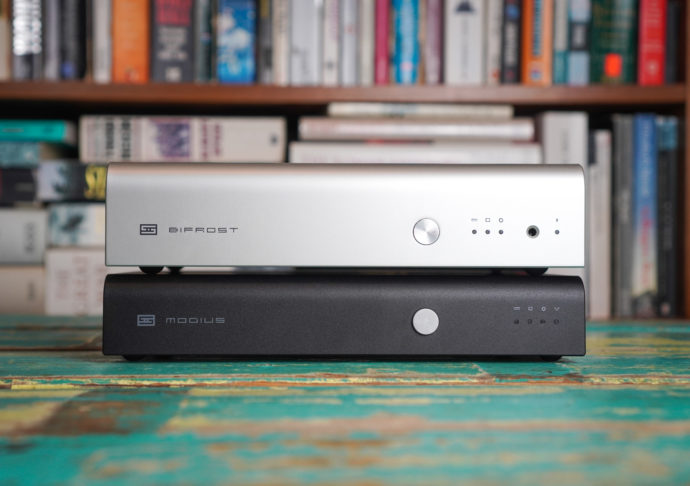
Luckily for you and me, there’s an abundance of choice in the world of personal audio at the moment, no matter which way you lean. We really are spoiled for choice thanks to trickle-down technology making its way into affordable, entry-level gear, including the line-up of digital-to-analogue-converters (or ‘DACs’, to you and me) from Schiit Audio. Hailing out of Valencia, California, Schiit has made a name for themselves for bringing performance to the audiophile masses, all with a dose of maverick charm and puns galore littered throughout their product line-up.
Schiit favours the use of discrete design throughout their product line-up, and continue to champion their ‘Multibit’ DAC technology in their digital products, being their take on the older ‘R2R’ resistor-ladder stye of digital conversion, believing it to deliver the user a superior musical experience. Perhaps somewhat encouraged by the campaigning of objectivists within the hobby, Schiit also allows users to choose more affordable, better-measuring delta-sigma DACs for some products within their line-up – options which might certainly look stronger on paper, but which also offer a cheaper, less complex product for those looking for a less complex solution to help digitised music to reach their ears.
A new balanced DAC has entered the chat.
Their newest addition to the DAC section on their product page is the all-new ‘Modius’, a fully-balanced decoder of 1’s and 0’s coming-in at exactly $100USD over their entry-level Modi 3, for a total (rather sharp) asking price of $199 USD.
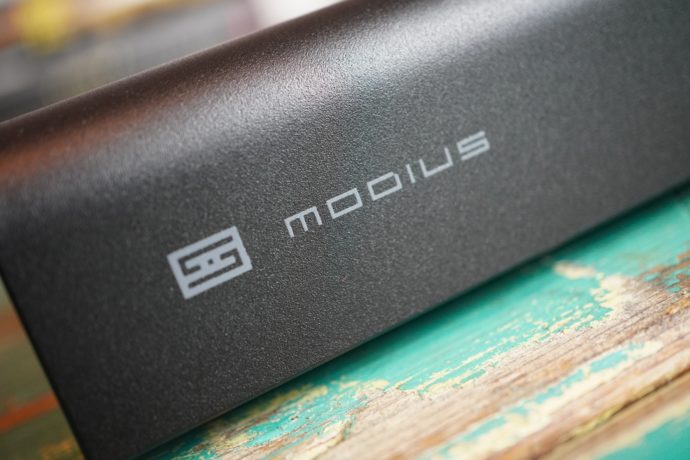
As its name hints, the Modius is an upgrade over the Modi in just about every way. In addition to the aforementioned balanced topology (the Modius sports a pair of XLR outputs in addition to single-ended RCAs), the Modius also includes an AES digital input as well as optical, coaxial and USB. Speaking of USB, the Modius features Schiit’s exclusive new ‘Unison’ USB interface which has been specially developed in-house to improve audio performance and device compatibility over that of an off-the-shelf USB interface.
There are no wall-warts to be found with the new Modius. In fact, it doesn’t even have a power switch (this is the part where I should make a joke about Schiit finally removing the rear-mounted power switch…) as the Modius is completely USB-powered via one of its two USB-micro inputs, one designed to handle both data and power duties, and the other to provide power if you’re not using a USB signal. Under the hood of its much larger chassis, the Modius features the newer AKM4493 delta-sigma DAC chip which combines with an upgraded analogue section to deliver some pretty impressive specs:
- Frequency Response: 20Hz-20KHz, +/-0.1dB
- THD+N: 0.0003%, with or without external power
- IMD: 0.0006%, CCIR, with or without external power
- S/N: > 115dB, referenced to full output, with or without external power
- Crosstalk: -125dB, 20-20kHz
The new Bifrost: A second coming.
Look one rung up the ladder on the Schiit Audio DAC line-up and you’ll find the recently-launched second iteration of the Bifrost, the original being Schiit’s first-ever DAC. In Norse mythology, Bifröst was the name given the rainbow bridge that connected Asgard, the home of the gods with Midgard, the home of humans. It’s apt then, perhaps, that the Bifrost has the job of being the digital bridge between artist and listener, delivering an analogue signal to your amplifier all the while trying to trick you into forgetting that it’s all a series of binary information.
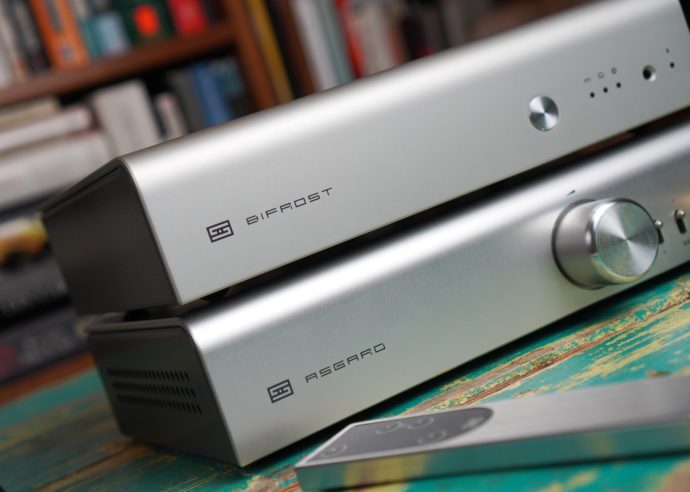
The Bifrost is no small step-up in price on the DAC ladder above the Modius – in fact, it’s over three times the Modius’ asking price of $199 at $699 USD. This is partly due to the use of the ‘ladder’-style DAC inside, or ‘True Multibit’, to use Schiit Audio’s trademarked moniker for it. The DAC that sat inside your parent’s old CD player was probably one of these R2R, or resistor ladder DACs. These devices work by having an arranged set of resistors (i.e, the ‘ladder’) that each, in turn, transforms a binary signal into an analogue output voltage – something that you and I know as music. These devices are more difficult and expensive to manufacture but are often prized by audiophiles for their more organic, engaging tone. Resistor-ladder DACs, by design measure relatively poorly compared with the Delta-sigma style devices. In the case of the new Bifrost, the specs look a little something like this:
- Frequency Response: 20Hz-20KHz, +/-0.1dB, 2Hz-100KHz, -1dB
- Maximum Output: 2.0V RMS single-ended and 4.0V RMS balanced
- THD: <0.003%, 20Hz-20KHz, at max output
- IMD: <0.004%, CCIR
- S/N: >114dB, referenced to 2V RMS
(In case you’re looking for the difference, there’s one fewer zero after the decimal place on the Bifrost for those Total Harmonic Distortion and Intermodulation Distortion numbers. Disgusting…right?).
Delta-sigma style DACs, on the flip side, are generally par for the course for most digital devices these days thanks to their inherent simplicity and affordability, and the tiny DAC chips that sit inside everything from your phone, to your laptop are churned out by the hundreds of thousands. As for their sound quality, the typical indictment of delta-sigma DACs is that they *can* sound…digital, for lack of a better word. Less human. Sterile.
A trickle-down ladder.
The Bifrost scores a pair of AD5781 DAC chips which are also used in the $1,299 USD Gungir Multibit, the penultimate digital device offered by Schiit audio. While not insignificant in terms of price, the added features and smarts packed into the Bifrost this time around makes it a pretty compelling value proposition, and one which might nudge you away from choosing one of their loftier devices. The title ‘Mini Yggdrasil’ has been thrown around more than once by online forum dwellers.
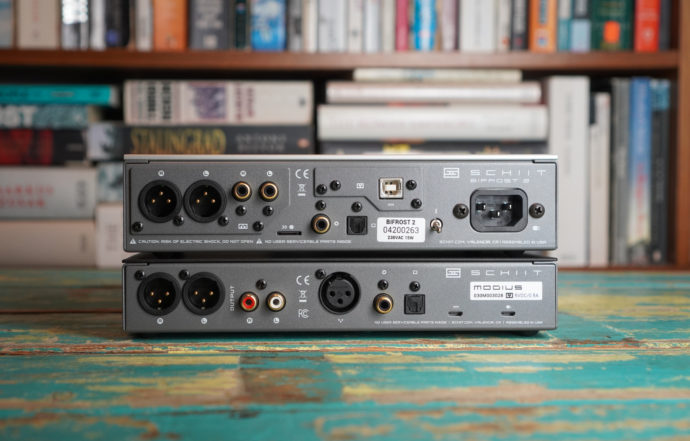
Occupying the same footprint as Schiit’s Asgard and Lyr family of mid-sized products (the same sized footprint as the Modius, to be exact), this time around the Bifrost squeezes-in a pair of balanced outputs in addition to single-ended RCA outputs. The Bifrost actually has one fewer digital input than its newer and more affordable stablemate, eschewing an AES input but gaining a very handy feature – a remote! The small, brushed aluminium remote manages input selection and is able to mute the Bifrost’s analogue signal from. There’s also a curious ‘Phase’ switch that doesn’t really appear to do much at first, so it seems that some more digging is in order on that front for this review.
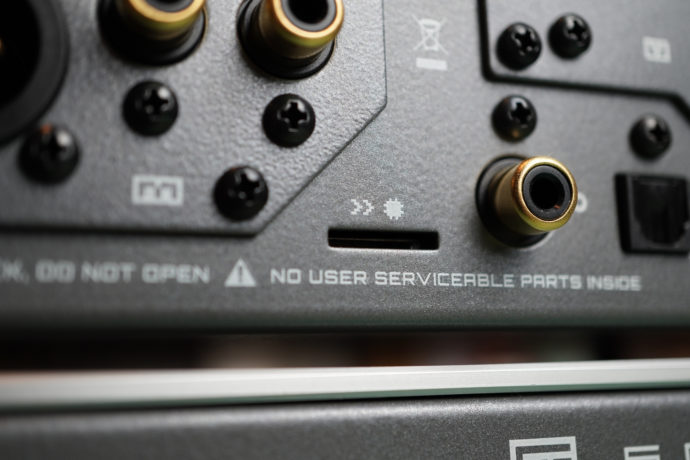
Modular design
The Bifrost has been designed to stick around with its owner for a while thanks to its ability to upgrade both hardware and firmware. A MicroSD slot on the back of the Bifrost allows you to flash the device down the track should an update become available, and the USB and analogue cards can be taken out and replaced by the user if hardware improvements are made down the track. Unlike previous Schiit products, there’s no longer any need to post your device back to Schiit HQ for them to perform the upgrade for you.
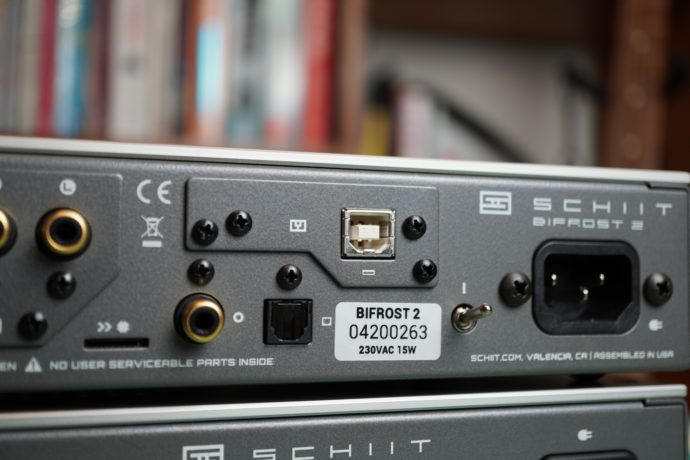
1’s and 0’s, no B-S.
With two new DACs on the market featuring broadly the same size, features and capabilities but very different approaches to digital conversion (and price), it seemed to me that a comparison of the two Schiit digital devices seemed prudent rather than running each of them through their paces, solo. While they’re different devices in terms of features asking price and engineering philosophy, they’re both classically Schiit DACs in terms of some very deliberate omissions. For starters, there’s no power switch on the front of either DAC nor is there likely to be one appearing on a Schiit DAC near you any time soon. Next, there’s no volume nor pre-amp functionality unlike many budget alternatives such as the $129 Topping E30. And lastly, this pair of Schiit DACs are only capable of handling PCM files up to 24-bit/192kHz – they won’t do DSD, and they certainly won’t do MQA.
Is this really a problem? I’m most certainly not a bat (I can’t hear much beyond 16kHz), I have a sum total of two DSD albums in my 3 Terabyte digital music library, and I can’t see MQA taking over the music and recording industry anytime soon. Schiit has made a punt that the vast majority of the world happily listens to Redbook-quality digital audio, and beyond that, there really isn’t *that* much music available beyond the Bifrost’s upper sampling rate of 192kHz. I do kind of admire this approach from Schiit. While many of their contemporaries are stuffing their devices with all kinds of digital filters, DSP and file-type compatibilities, they’ve continued to design and market their digital boxes as ones designed to simply receive digital information from a source, and then hand it off downstream to an analogue device.
So which of these two Schiit DACs sounds like your cup of tea? Would you rather save yourself four hundred dollarydoos, and still manage to nab yourself a terrifically capable device that also scores high praise from the high priests of measurement? Or, does the idea of some fancy digital trickery cooked-up by some stubborn digital throwback adherents (oh, plus a remote), sound like it’ll sound better to you?
The review continues over the jump on page 2.







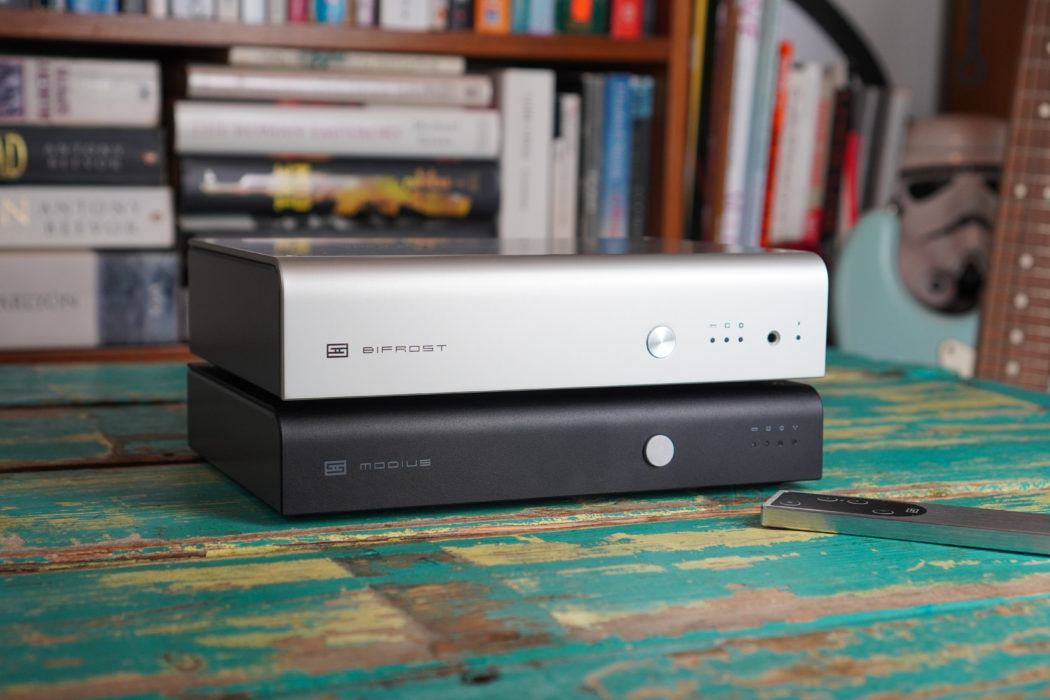
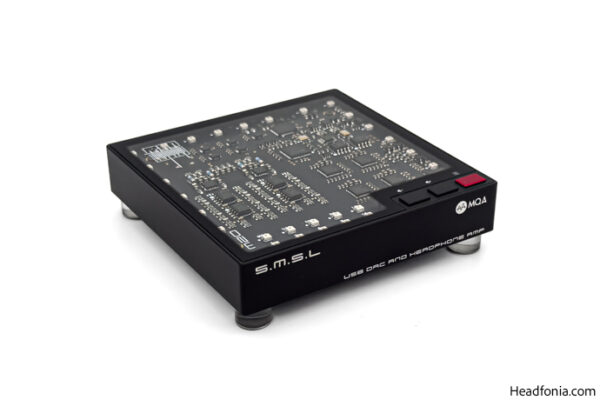
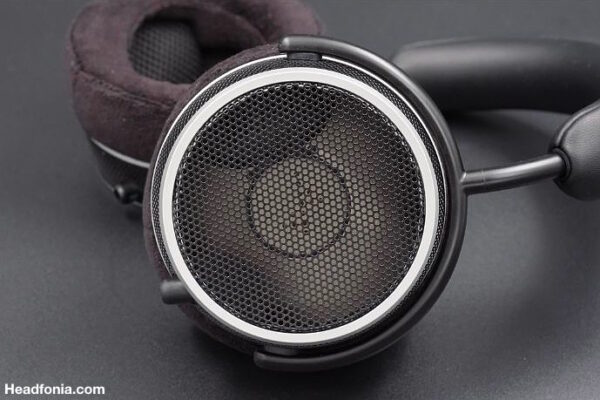
Mike I
Very nice review again, Matty ! I just miss one thing in your reviews: some classical music when you compare.
Matty
Hey Mike, I can promise you that I have nothing against classical music! Check back for my next Monday review and I’ll include a reference or two for you : )
JD
I’ve owned both at the same time. The modius is a great DAC. The bifrost2 sounds about 12% better with overall smoothness. The modius separation is more deliberate.
Surya Pratama Wijaya
Anong the bifrost or modius, which has more treble and midrange sparkle?
Matty
I’ve made notes about this in the review.
TheKindlyDragon
This was great, and I will definitely take it into account when pondering whether to upgrade my Modi Multibit to either the Modius or the Bifrost to enable balanced output.
Although, the way ads are implemented here made the site an infuriating read with how they made the text jump around as they loaded in and out on mobile UI. The amount of times I needed to readjust, find my place, and restart reading was getting old quick.
Mike I
I also have problems with the display of the ads: the way they make the text jump is very disturbing.
Coconut
Had the same issue with ads using google but switched to DuckDuckGo non trackable search engine on my phone to read this great article (super job).
Try it, the all review displays and no pesky bouncy ads in the way.
Twoh
Same problem with the ads. It does help some if you request the website as desktop version (bottom right in settings for Chrome on iPhone X).
Luis André Ferreira
Dear Headfonia, I love your website, your reviews, and I find my self reading Headfonia reviews every single day for the last 3 years.
But your advertising adds make the text jump a lot and sometimes I just quit reading the review because it’s very disturbing…
Lieven
In reply to all the ad comments. Matty did report this to me, and I immediately asked the agency to cut down on the ads displayed.(Which was done)
I hope the experience is better now. Do realize that this is our only way of income. Any way, there’s always an ad blocker for those who still find it annoying.
Jim Anderson
I am very much considering an Asgard 3 for my soon to arrive HD 660S as well as a preamp. My main question though is whether to get
1) the Multibit dac card installed
2) The Modi multibit or
3) the Modius
I don’t need balanced out. Sure the extra inputs on the Modi multibit or Modius would be nice but not necessary.
It sounded like the Card was close to the Bifrost (way out of my budget).
Any more comparisons between the Card and the Modius?
Matty
Hey mate, if you don’t need the extra inputs and outputs of the Modius you’ll be very happy with the Asgard + card. Plus, it’s a much neater package.
Joseph Renthlei
As always great review. You are my go to reviewer when looking for an audio gear. I read your Topping A90 review and found it genuinely useful. What would be a better pairing for the A90 between the D90 and the Bifrost.
Jose R
As always great review. You are my go to reviewer when looking for an audio gear. I read your Topping A90 review and found it genuinely useful. What would be a better pairing for the A90 between the D90 and the Bifrost?
Ginger
Thanks for the excellent review – really appreciated.